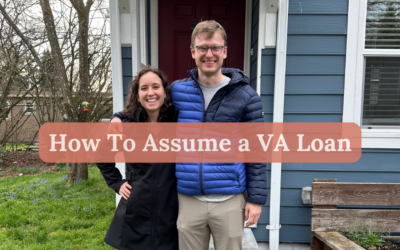So, you are buying a house? Whether it’s your first home or 5th, here you’ll find lending options to make your homeownership goals a reality. Everything from your first-time home buying programs to VA and jumbo loans. Before we dive I want to recommend NOT to self diagnose! There are many situations where standards for loans can be flexible. Talk to a lender directly and see what loan is best for you to finance your home purchase.
FHA (Federal Housing Administration) Loan
FHA is often used synonymously with the term “First Time Home Buyer Loan”. Slightly misleading as you can use an FHA loan multiple times!
LOAN REQUIREMENTS:
- You can put as little as 3.5% down on a 15 to 30 year loan.
- Buyer’s need a minimum Credit Score of 580 if putting 3.5% down
- If a Buyer is putting 10% down, credit score requirements can fluctuate between 500 and 580.
- Debt-to-income Ratio minimum requirement is 43%.
- The home or Multi-family residence that is being purchased MUST be the buyers primary place of residence
- Buyer must have consistent work history, income and proof of employment
- Buyer’s are obligated to pay Premium Mortgage Insurance (PMI), which is wrapped into your principle and interest costs of the loan.
- SUMMARY: An FHA loan is optimal for home buyers who do not have 10% or more saved for a down payment, and/or have less than a 620 minimum credit score.
There are also options like Down Payment Assistance programs. More on that topic HERE!
CLICK HERE for more information on FHA requirements or reach out to me directly – I’m happy to discuss your financing options and pair you with a reputable local lender.
HISTORY of FHA Loans:
(If you’re interested in knowing how FHA came to be, read this section, otherwise skip it!)
- In 1934 Congress created the Federal House Administration.
- Prior to the creation of FHA financing, home buyers could only finance 50% of the loan purchase and the repayment of the entire loan was due in 3 – 5 years with a balloon payment. Hardly accessible to the majority of Americans.
- At this time, 1 in 10 Americans were homeowners. We were mostly a nation of renters.
- Fast forward to 2001, homeownership rates in the United States soared to 68.1% It is certainly not without flaws and the accessibility of the FHA loan made it possible for many Americans to make their dream of owning a home come true.
CONVENTIONAL LOAN
This type of loan is not backed or insured by the Government. Conventional loans are offered by private lenders, such as banks, credit unions and mortgage companies.
LOAN REQUIREMENTS:
- Some conventional loans require as little as 3% down payment!
- If you are looking for a loan that does not require Premium Mortgage Insurance (PMI) borrowers must put down a minimum of 20% down or pay an upfront prepayment cost
- Looking to finance an investment that is NOT going to be your primary residence? Conventional loans are the chosen loan type and require 20 – 25% when not your primary residence.
- Conventional loans require a minimum credit of 620. Like most loans, if your credit score is higher, you will obtain a lower interest rate.
- Consistent work history and income.
- Conventional loan rates are generally higher than FHA loans, but do not require PMI payment if financing 80% or more.
- Your lender will show you multiple financing options (if eligible) so you feel well informed and confident with your financing selection!
JUMBO LOAN
A buyer will obtain a Jumbo loan, if the amount being financed exceeds the loan limit.
Here’s a breakdown of the 2022 conforming limits for Pierce & King counties:
- 20% ($222,812 downpayment) = $1,114,062 purchase price
- 15% ($157,279 downpayment) = $1,048,529 purchase price
- 10% ($99,027 downpayment) = $990,277 purchase price
- 5% ($46,908 downpayment) = $938,157 purchase price
Typically (and historically) on a Jumbo Loan, you put 20% on the loan. With that said, there are now Jumbo loans that allow buyers to put as little as 3 – 5% down! Jumbo Loans, in general carry more strict guidelines with regard to required reserve funds, credit score and underwriting guidelines. The most enticing aspect of a jumbo loan is the ability to obtain a larger loan to finance your home. However, this benefit comes with higher interest rates (typically) compared to a conventional loan.
VA LOAN
VA loans are available for active duty, retired and unmarried surviving spouses.
LOAN REQUIREMENTS
- Requirement 0% down payment
- Rather than PMI the VA loan has a funding fee. This is paid up front and is wrapped into the buyers closing costs or paid in cash at the time of the purchase.
- The funding fee is waived for those who are partially or fully disabled, have been awarded the purple heart or are the surviving spouse.
- To minimize the funding fee, buyers can opt to pay a down payment when purchasing their home.
- Borrower must occupy the home as a primary residence
VA LOAN MYTHS DEBUNKED
There are several myths and misinformation regarding the VA loan, here are a few clarifying points:
- There is NO loan limit for VA. What does this mean? If your income supports the purchase of a 4 million dollar property, you can purchase and finance 100% of the home, assuming that you qualify for the loan (of course) and the VA approves the value and condition and the home.
- You can use your VA loan AS MANY times as you wish!
- EXAMPLE: Buyer purchased a home in New York, but transferred to Tacoma, WA on active duty and wants to purchase a 2nd home that will be their next primary residence. The buyer previously used their VA eligibility to purchase a home in NY just 1 year ago. Assuming that the borrower qualifies (based on income, debt and minimum credit score) the Veteran can use their VA benefits for a 2nd, 3rd, 4th… 20th time!
- You can have MORE than 1 VA loan at one time if you have remaining entitlement available.
Physician Loans
Physician loans, sometimes referred to as “doctor loans” are a type of loan that is not often discussed. This loan type allows doctors the opportunity to buy a home before they would otherwise be able to. As one can imagine, the student loan debt that a medical student takes on while earning their Doctorate degree is expensive. A benefit of using a physician loan is that it allows doctors to qualify without history of employment (i.e. when a doctor is still in residency) and there is typically no downpayment necessary. Another perk of this loan type is no PMI (personal mortgage insurance) which increases the overall monthly payment by a few hundred dollars.
LOAN REQUIREMENTS
- Must be a D.O. degree
- There are some loan programs for D.S., M.D., P.M., V.M.
- Proof of employment and income (flexible for internship, residency, fellowship)
- Borrower must occupy the home as a primary residence
However, some drawbacks to using a physician loan is they are most likely not a fixed interest rate. Physician loans are typically ARMs (adjustable rate mortgage). A physician loan can have a lower interest rate to begin with, but can increase or decrease depending on the market.
Are you considering purchasing a home in North Tacoma? Click here to find out how to buy a home in North Tacoma; the most most competitive real estate markets in Tacoma
What are closing costs and how much are they typically when purchasing a home?
Find out why shopping for a home in the winter months, could be a really strategic move.
When buying a home in Pierce County, what information can you expect to gather from your home inspection? Learn more here.





